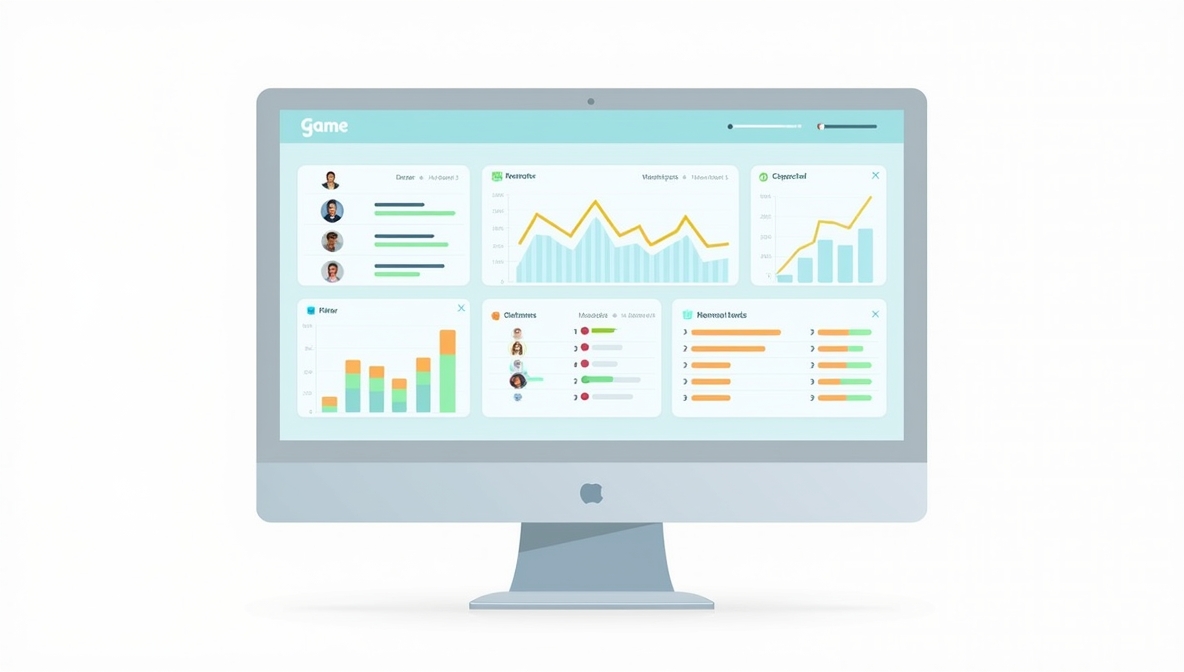
Every successful casual game has more than simply captivating gameplay and stunning graphics. Developers and publishers need a robust admin panel to manage their game effectively once it is released. Think of it as the “control center” for your game—a place where you can control, customize, and optimize without touching the codebase.
What features should a casual game admin panel include to be both forward-thinking and useful? Let’s take a closer look.
1. Player Management Tools
Finding and managing individual players should be a breeze with a good admin panel.
- Search and filter by gamer ID, username, or email.
- Account controls, such as blocking, unblocking, or muting players.
- Progress views to see their level, items, and activity history.
👉 Why it matters: You will resolve support requests faster and increase player satisfaction.
2. Manage the game economy
In-game money and prizes are frequently used in casual games. The admin panel should allow for:
- Adjusting the balance of currencies (coins, gems, boosters).
- Setting prices for items, skins, or upgrades.
- Setting up offers or discounts for special events.
👉 Why this is important: Without a new release, you can explore monetization tactics or adjust the balance.
3. Content and event management
Keeping casual games relevant requires frequent updates. Admin panels should make it easy to:
- Plan events (seasonal themes and weekend bonuses).
- Levels and resources can be added or removed dynamically.
- Changing challenges or daily missions.
👉 Why this is important: Gamers want variety, and the admin panel lets you provide it fast.
4. Analytics and Insights
Numbers tell you how your game is really doing. Include dashboards with:
- Daily/Monthly Active Users (DAU/MAU).
- Retention metrics (Day 1, Day 7, Day 30).
- Monetization data (revenue, ARPU, ARPPU).
- Churn analysis (where players quit).
👉 Why it matters: Data-driven solutions improve both the gaming experience and revenue.
5. A/B Testing and Experimentation
Casual game audiences are diverse. The admin panel should enable:
- Creating test groups for features or rewards.
- Running experiments with different difficulty curves or prices.
- Compare results in real time.
👉 Why it matters: A/B testing helps you safely optimize engagement and monetization.
6. Notifications and Messaging
Communication is important. Include tools for:
- Push notifications to re-engage players.
- In-game announcements about events, maintenance, or promotions.
- Communications that are tailored to a particular player or subgroup.
👉 Why it matters: The right message at the right time increases player retention.
7. Role Management and Security
Because not everyone should have the same permissions, establish role-based access. The admin panel should support:
- Role-based permissions (admin, analyst, moderator).
- Activity logs to track changes.
- All users should have secure authentication.
👉 Why it matters: Keeps external threats and internal bugs out of your game.
8. Easy integration with external services
These days, games don’t function alone. The admin panel ought to be integrated with:
- Payment processors (for in-app purchases).
- Ad networks (to track ad revenue).
- Customer support tools (to handle requests efficiently).
👉 Why it’s important: With a single dashboard, errors are reduced and time is saved.
Final thoughts
An admin panel for a casual game ought to be a useful tool. You can:
- Quickly react to players if you have the appropriate characteristics.
- Keep your game economy balanced.
- Easily run events and experiments.
- Use data to inform design and monetization strategies.
Melior Games makes admin panels that provide developers and publishers with total control over their games so they can stay competitive in the always-changing casual gaming market.




